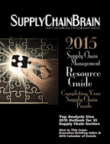
Visit Our Sponsors |
|
|
|
|
|
|
|
|
|
|
|
|
|
|
|
|
|
|
|
|
|
|
|
|
|
|
|
|
|
|
|
|
|
|
|
|
|
|
|
|
|
|
|
|
|
|
|
|
|
|
|
|
|
|
|
|
|
|
|
|

The movement to implement real collaboration is alive and well in supplier relationship management. When you think about it, how can SRM be truly effective without collaboration that includes processes for transparency and continuous communication—where suppliers are full partners in managing the relationship?
A key lesson we teach in the University of Tennessee’s Vested Outsourcing Executive Education course is Vested’s Rule 5 – Insight vs Oversight Governance structure. Don’t install processes to manage the supplier, think in terms of managing the business with the supplier.
Our research revealed the best supplier relationships adopt a “Vested” mindset – shifting from a “what’s-in-it for-me?”—get the most out of my supplier mindset—to a “what’s-in-it-for-we?” mindset, which gets a company out of the business of managing the supplier. Buyers and suppliers work together in an environment marked by trust, transparency, flexibility and guiding principles that are mutually defined by both parties.
Let’s examine what can happen when the business is not managed with insight, with respect to hedging risk. A good example comes from the recent, public revelations in connection with Apple’s fumble with a five-year agreement with GT Advanced for the production of sapphire glass, ending with GT Advanced entering Chapter 11 bankruptcy. Bankruptcy documents revealed that Apple, rightfully praised for its innovations in electronics, is not very innovative when it comes to formulating and managing its contracts with strategic suppliers. A supplier bankruptcy is a loss for the supplier, and also a loss for Apple, which was hoping to have sapphire glass available in the iWatch and iPhone 6 launches. Not only did it not get sapphire glass – the launch date slipped.
Contrast this with McDonald’s, which works in a highly collaborative Vested mindset with its most strategic suppliers. McDonald’s approach is that by working in a trusting and transparent manner with strategic suppliers it can solve tough problems and recover when “business happens.” During the 2004 Avian flu crisis its suppliers stepped up to meet McDonald’s supply goals in Asia, assuring supply when virtually all of McDonald’s competitors ran out of chicken.
Moving to an insight vs. oversight mindset with strategic suppliers is easier said than done for most organizations. It’s difficult for successful companies to abandon entrenched approaches that “worked” so well. Organizations might think: “Why should I forge a long-term collaborative partnership with Supplier X when others out there are eager to play by my rules?”
In 2014 Gartner analysts noted that by 2017 about 20 percent of buyer/supplier/logistics relationships will operate using collaborative, value-based relationship principles. While that percentage might not seem very impressive, think of it this way: that essentially doubles where we are today with those types of relationships!
An era of increasingly collaborative, value-based buyer/supplier relationships is at hand. Given the Gartner analysis, we are closer than you might think to a world where truly collaborative strategic relationships are the norm. In fact, there might soon come a day when SRM means Strategic Relationship Management.
RELATED CONTENT
RELATED VIDEOS
Timely, incisive articles delivered directly to your inbox.







